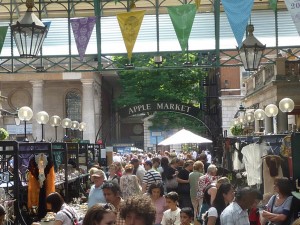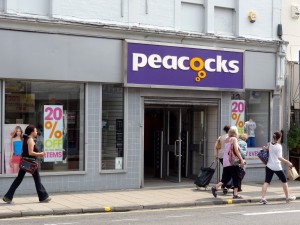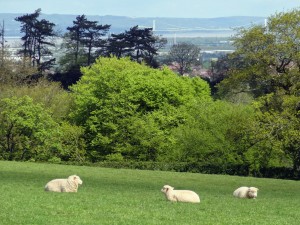 In the models of perfect and monopolistic competition, the long-run equilibrium involves firms making zero supernormal profit. The key assumption driving this outcome is that supernormal profits in the short run attract new entrants to the market.
In the models of perfect and monopolistic competition, the long-run equilibrium involves firms making zero supernormal profit. The key assumption driving this outcome is that supernormal profits in the short run attract new entrants to the market.
Increased competition then results in lower prices for consumers and firms’ profits fall. Therefore, an important question is how long does it take for this process to take place?
In a recent post on the Freakonomics blog, Daniel Hamermesh describes a situation in which he was actually able to observe this adjustment process taking place amongst buskers in the centre of Madrid.
This interesting example illustrates that, at least in some cases, this process can start even before entry occurs. This is because incumbents are able to make adjustments to their existing strategies, in the case of the buskers by changing their location. Consequently, profitable opportunities start to be eroded away very quickly.
Perfect competition Chillin’Competition blog, (24/10/11)
Questions
- What are the assumptions of the model of monopolistic competition?
- What is the difference between monopolistic and perfect competition?
- Does the market for buskers fit well with the assumptions of monopolistic competition?
- In this market what might be the benefits for consumers of increased competition?
- What are the key strategies incumbents might use in this market?
- How long do you think entry might take in this market?
 It’s not the first retailer to go into administration and it won’t be the last, but the well-known high street retailer Peacocks will continue to trade for the foreseeable future thanks to Edinburgh Woolen Mill.
It’s not the first retailer to go into administration and it won’t be the last, but the well-known high street retailer Peacocks will continue to trade for the foreseeable future thanks to Edinburgh Woolen Mill.
The administrators were called in at the beginning of 2012, as Peacocks total debt reach £750 million and it was unable to restructure £240 million of this debt. Edinburgh Woollen Mill has bought the company out of administration, protecting 6000 jobs in the UK. However, at the same time more than 3000 workers will be made redundant, as 224 stores cease trading.
Throughout the recession, retailers across the UK have been struggling, as household incomes have remained low, causing consumer spending to fall. One of the administrators from KMPG, commented that:
‘This (the low consumer demand), combined with a surplus of stores and unsustainable capital structure, led to the business becoming financially unviable.’
 The coming months will be crucial in determining whether more jobs are lost and if there are any further store closures. Much hinges on the ability of Edinburgh Woollen Mill to stabilize the financial performance of Peacocks and stimulate renewed customer demand. The following articles consider this take-over.
The coming months will be crucial in determining whether more jobs are lost and if there are any further store closures. Much hinges on the ability of Edinburgh Woollen Mill to stabilize the financial performance of Peacocks and stimulate renewed customer demand. The following articles consider this take-over.
Peacocks closes 19 Ulster stores with 263 job losses Belfast Telegraph (23/2/12)
Peacocks Takeover: Edinburgh Woollen Mill buy retailer but 3,100 jobs lost BBC News (including video) (22/2/12)
Peacocks piqued by PIKs Guardian, Nils Pratley (22/2/12)
Edinburgh Woollen Mill buys Peacocks Independent, James Thompson (23/2/12)
Peacocks sold to Edinburgh Woollen Mill – KPMG The Wall Street Journal, Jessica Hodgson (23/2/12)
Questions
- Why has consumer demand in the retails sector fallen during the recession?
- What type of take-over would you classify this as?
- Who are Peacocks’ main competitors? In which market structure would you place the retail sector? Explain your answer.
- The Guardian article refers to the Management-buy-out of Peacocks in 2005. What is a management-buy-out? What were the problems associated with it?
- What are the problems that have been identified as causing Peacocks to go into administration?
- To what extent do you think the Management-buy-out of 2005 is the main reason why Peacocks has fallen into administration?
Rising costs of cloth and a rise in VAT could mean that clothes prices are set to rise. Does this spell the end of cheap fashion from the likes of Primark and H&M? Or can they absorb the cost increases?
The following articles look at the causes of the rise in costs of clothing and what the cheap fashion chains can do about it.
Articles
Primark follows fashion rivals as it warns of rising costs Guardian, David Teather and Zoe Wood (13/9/10)
Primark warns on costs as growth slows Telegraph, James Hall (14/9/10)
Is this the end of cheap clothes era? Price of cotton has rocketed because of floods, Primark warns Mail Online, Sean Poulter (14/9/10)
Fashion chains far from cheerful about future of cheap chic Observer, Zoe Wood, David Teather and Julia Finch (19/9/10)
Data
Commodity prices (including cotton) Index Mundi
Cotton futures BBC Business: Commodities
Questions
- Why have cotton prices been rising? Illustrate your arguments with a demand and supply diagram.
- Would you expect a rise in the price of cotton of 45% to lead to a rise in the price of cotton clothes of 45%, or of more than 45% or of less than 45%? Explain.
- For what other reasons are the prices of clothing rising?
- How did the process of globalisation keep the price of clothing down?
- Next’s chief executive, Lord (Simon) Wolfson said that if prices of Next’s clothes go up 8% then the number of units sold will fall by 10%. What is the value of the price elasticity of demand that he is assuming?
- Why is the ‘Fairtrade system so important’?
- “Some retailers have already increased prices but there is more to come. The products most under threat are T-shirts, underwear and socks. More complicated garments such as heavy jeans will be less affected.” Why are the prices of more complicated garments likely to rise by a smaller percentage than those of simple garments?
- What has been happening to the demand for cheap fashion clothing and why? Combine this effect with those of costs on a demand and supply diagram.
- What type of market structure is the market for fashion clothing? What are the implications of this for the profits of retailers?
The market for food in the UK is highly competitive. From dining in style to a simple take-away, one of the key words when it comes to dining seems to be choice. Competitive prices and high quality are on offer, which is largely due to the sheer number of restaurants available to consumers. However, consolidation seems to be on the menu.
Nando’s is a well known restaurant and a popular eating destination on UK and Irish high streets, with more than 230 restaurants. This chicken restaurant group has made a £30 million bid for Clapham House, the company behind the Gourmet Burger Kitchen chain with 53 branches. Clapham’s shareholders were advised to accept the deal and on the 17th September 2010, it is reported that a deal was reached with Nando’s Group Holdings and its private equity owner Capricorn Ventures International. The 74 pence per share deal was met with disappointment by some analysts, who felt that the company was under-valued, despite failed attempts by Clapham House’s Board to persuade Capricorn to raise the offer price or find an alternative bidder.
The restaurant industry has suffered from the recession and especially by the weak economic recovery, so perhaps lower valuations are to be expected. Nando’s said:
‘As macroeconomic weakness has persisted in the UK, the trading environment for restaurant businesses in the UK has been difficult. This is evidenced by Clapham House’s vaolatile weekly trading performance.’
Nando’s intend to invest significantly in Clapham Houses’ businesses to reinvigorate their previous competitor. This may be essential, given the expectation that conditions in the UK will remain fragile, with consumer confidence staying low, as well as a somewhat untimely rise in VAT in January next year, which is almost certain to have an adverse effect on the restaurant business.
This take-over deal is not the first in the restaurant industry and nor is it likely to be the last, as the UK economy remains in a vulnerable state. The following articles look at this and over takeovers.
Nando’s to buy Gourmet Burger Kitchen for £30m BBC News (17/9/10)
UK restaurants serve up £50m in takeover deals Management Today, Emma Haslett (17/9/10)
Nando’s swallows Gourmet Burger Daily Mirror News, Clinton Manning (18/9/10)
GBK team plots next move after Nandos deal Telegraph, Jonathan Sibun (18/9/10)
Nando’s to buy Real Greek chain for £30m Independent, Alistair Dawber (18/9/10)
Mithcells & Butlers and Nando’s to feast on rival restaurant chains Mail Online, Ben Laurance (17/9/10)
GBK owner Clapham agrees to Nando’s offer Reuters (17/9/10)
Questions
- What type of takeover is Nando’s purchase of Clapham House?
- Why has the weak macroeconomic environment adversely affected the restaurant industry? What might be the impact of next January’s rise in VAT?
- Will Nando’s takeover (or indeed any other takeover in the restaurant industry) allow the company to prosper from the weak economic climate?
- In which type of market structure would you place the restaurant industry in the UK? Explain the characteristics of the market structure you choose and why you have placed the restaurant industry in it.
- How was the finance for the deal raised by Nando’s Holdings Group? What other sources of finance are available to firms for this purpose? What are the (a) advantages and (b) disadvantages of each?
- What other takeovers have occurred recently in the restaurant industry? What types of takeovers are they?
 In the models of perfect and monopolistic competition, the long-run equilibrium involves firms making zero supernormal profit. The key assumption driving this outcome is that supernormal profits in the short run attract new entrants to the market.
In the models of perfect and monopolistic competition, the long-run equilibrium involves firms making zero supernormal profit. The key assumption driving this outcome is that supernormal profits in the short run attract new entrants to the market.
